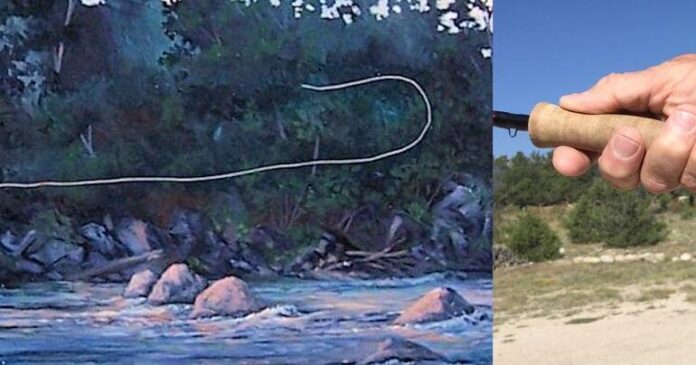The iconic perception many have of fly fishing is the rhythmic to-and-fro motion of casting a fly. Hypnotic in its timing and grace, it was the first thing I recognized as a youth and it attracted me to the sport. It helped that there was often a fish on the end of the angler’s line after I witnessed a cast of precision and grace.
Last column, the focus was on getting close to the trout. The other fundamental of the sport is a good first cast. With it, trout will often put a hook in their mouth with enthusiasm. Without it, opportunities are squandered and the game heavily favors the trout. This is a skill often observed as lacking in many devotees I see on the water. More often than can be counted, my guests will reveal that they haven’t picked up and cast their rod since the last time they visited, ensuring part of the day will be spent knocking the rust off. Until that good first cast is second nature, most will remain stuck in catching fish by “luck” rather than skill.
The antidote is simple. Want to learn a new skill? Practice. Like to be better at something? Practice. Want to be the best at something? Practice more. When supplemented with a little coaching/guidance, practicing the skills of placing your fly where you want it on the first try leads to fly fishing with the confidence of a blue heron.
In the spring, you can sometimes find me at one of the local parks, crawling around on my knees (wading depth), and casting at paper plates as targets. This gets all the muscle memory awake for the coming season and sometimes draws a small cadre of spectators hoping I’m staying on my meds.
By doing this faithfully, I find myself confident when out on the river or lakes, with all their attendant distractions of wind, obstacles, current and slippery rocks.
When looking at the “Art” of casting a fly, terms like loop size, line speed, tracking and other mesmerizing terms can make a new angler a little confused, if not intimidated. Take it easy, it’s not that hard.
The physics of casting are pretty straight forward. Unlike most other types of fishing, where you have a heavy lure or sinker and a line that weighs nothing, fly fishing is reversed. Flies weigh next to nothing and it is the weight/tension of the line dragging on the water that flexes the rod and creates the cast. Pull the line off the water with power by raising the rod to near vertical, pause while the line straightens behind you, then push the rod forward against the resistance/weight of the line. The line and flies unfurl in front and set on the water. This feels backwards to most initially, but with practice it becomes muscle memory quickly.
What is often overlooked when learning to cast is the importance of holding the rod so it is balanced in the hand, letting it do the work, with us providing the timing. When the thumb is placed just slightly back from the balance point on the rod/reel, it’s in balance. To be accurate, simply rotate the hand so the thumb pushes the rod at where you want the flies to land, and you’re on your way.
Now, getting out on your own can be a good way to start, but it shortens the curve to have an instructor/mentor to provide some guidance along the way. The benefits of investing in a class to give you a solid foundation of knowledge and technique are well documented and worth every penny. In a shameless plug, consider taking a class Like ArkAnglers’ “Fly Fishing Intro (NOT your average 101)” this fall or next spring to get a head start on next season or enjoy the great fishing opportunities we have through the winter here. Looking forward to seeing you all on the water soon.
Andrews is head guide for ArkAnglers fly fishing guide service and an internationally recognized artist. His artwork can be viewed at AVDI Gallery in Buena Vista and at viewgallery.com.































